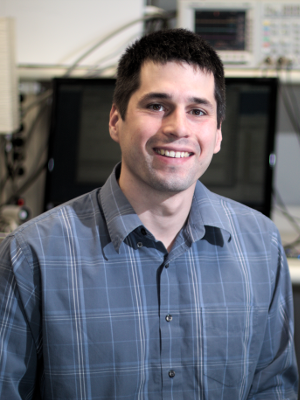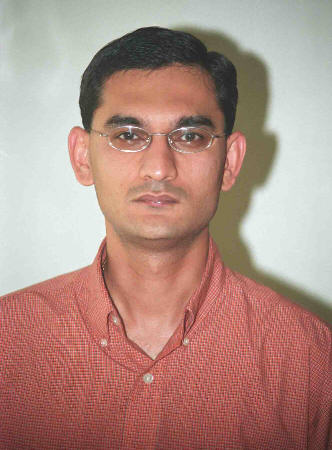UMBC Professors Nilanjan Banerjee and Ryan Robucci have been awarded an NSF grant from the NSF-NIH Smart and Connected Health program. The total sum is $650,000 over 3 years. It is a collaboration between UMBC, Madonna Rehabilitation Hospital and UA.

The collaborators include Dr. Susan Fager, a physical therapist from Madonna, and Dr. James Parkerson from UA, who is helping with the energy harvesting component of the project. The SCH program is very competitive, and last year the acceptance rate was close to 6%. The project deals with building wearable sensing systems for environmental control and therapy for paralysis patients, and cuts across electronics, sensor analytics, and usability.

According to Banerjee, “What we mean by environmental control is controlling appliances, and so on and so forth, and therapies basically helping…[patients] to improve their motion over time. So, we are building the sensors, we are building the software on the sensors, and also…the ensuing systems around it.”
Banerjee goes on to describe the project as “a marriage between electronics, software and usability.”
Robucci adds that “We’re working on this project to take into account the patient, and integrate them in as part of the system, rather than forcing them to use the system in a particular way. We want to make sure that the technology and interfaces that we’re building are adaptable to each person and their needs.”

The project is described in greater detail in this abstract from the NSF website:
An estimated 1.5 million individuals in the United States are hospitalized each year because of strokes, brain injuries and spinal cord injuries. Severe impairment such as paralysis, paresis, weakness and limited range of motion are common sequels resulting from these injuries, requiring extensive rehabilitation. This project is developing invisible sensing systems embedded into bed sheets, pillows, wheelchair pads, and clothing, for environmental control and physical therapy for such paralysis patients. The system detects gestures regardless of evolving environmental and patient conditions and provides explicit real-time feedback to the user. Through the use of low-cost and ultra-low power capacitive sensing, the system reduces hospital visits and therapy costs.
The proposed system addresses the limitations of existing assistive care sensors through three novel technical contributions: (1) The use of a self-sustainable hierarchy of sensors; textile-based capacitive sensor arrays (CSA) and inertial sensors on the human body; to improve the accuracy of gesture recognition while consuming minimal energy. The inertial sensors train the capacitive sensor arrays for different body positions; (2) A self-learning algorithm that determines gestures automatically regardless of the position of the patient’s body and conditions using templates of gestures and patient conditions over time; and (3) Seamless integration of the patient in the feedback loop using amplification and animation to provide explicit real-time feedback to the user on how she/he is performing on his/her physical therapy, and how the system is interpreting his/her gestures. Additionally, the PIs are developing a cross-disciplinary undergraduate and graduate course that focuses on developing sensing systems while being cognizant of the actual needs in a rehabilitation hospital. The PIs are also using local university initiatives to engage minority and women researchers in the project.
Banerjee notes that, “The project would not be possible without the efforts of very motivated and hard-working students in the Analog/Digital and MPSS labs: Rebecca Baldwin, Alexander Nelson, Stanislav Bobovych, and Gurashish Singh.”
In the next month or so, Microsoft Research will be developing a five minute video showcasing Robucci, Banerjee, and Dr. Sandy McCombe-Waller. Microsoft has expressed an interest in advertising the wearable sensing system, because the system utilizes the Lab of Things, Microsoft’s home automation tool. (This video is in addition to the live interview that Banerjee recently conducted with Microsoft Research.)
In related news, Robucci, Banerjee and fellow UMBC professor Chintan Patel have been given a TEDCO award of $150, 000 for the wearable sensing systems project. According to Banerjee, “The TEDCO grant deals with developing a prototype for environmental control for patients with paralysis. It will also help [us in] designing a product for the system. As part of the grant we will build the system, and evaluate it on real patients at University of Maryland, Baltimore.”
Related Links: